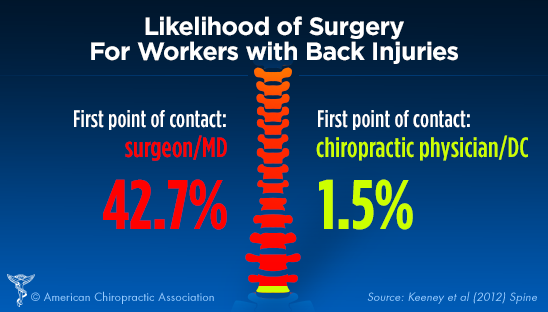What Your Pain In The Back States About Your Health: Common Problems And Signs And Symptoms
What Your Pain In The Back States About Your Health: Common Problems And Signs And Symptoms
Blog Article
Authored By-Martensen Knudsen
If you're experiencing neck and back pain, your body may be attempting to inform you something greater than just discomfort. The way your back feels can provide useful hints about your total well-being. Comprehending the particular type of discomfort you're feeling and any coming with symptoms is vital to untangling the secret behind your discomfort. Allow's check out the common problems and signs associated with different sorts of pain in the back to shed light on what your body may be signaling.
Types of Pain In The Back
When it pertains to pain in the back, there are numerous types that you might experience. One common type is muscular tissue discomfort, typically triggered by overuse, pressure, or injury to the muscle mass and ligaments sustaining the back. lower back pain and cramps of pain can vary from mild pain to severe and incapacitating discomfort.
One more type is nerve discomfort, which can arise from problems like herniated discs or sciatica. Nerve discomfort often provides as a sharp, shooting sensation that radiates down the leg.
Joint pain in the back can originate from problems like arthritis or sacroiliac joint dysfunction. This sort of pain is usually really felt in the lower back and can be exacerbated by certain motions.
In addition, back pain can be connected to architectural problems such as spinal stenosis or vertebral fractures. Understanding the kind of pain in the back you're experiencing is essential in identifying the suitable treatment and administration techniques.
Common Effects to Watch For
Moving beyond the various sorts of neck and back pain, it is essential to recognize the usual signs that can signify underlying problems.
Consistent back pain that worsens with activity or at night can suggest a more significant issue. Tingling or tingling in https://www.healthline.com/health/lower-back-pain-left-side-above-buttocks or feet, especially when accompanied by weak point, might indicate a nerve-related concern. If you experience abrupt fat burning in addition to back pain, maybe a sign of a much more systemic problem.
Take notice of any changes in bladder or bowel function, as this could be connected to spine compression. High temperature, cools, or evening sweats in conjunction with neck and back pain might signal an infection. Keep an eye out for pain that radiates down one or both legs, possibly indicative of sciatica.
Wellness Issues Linked to Pain In The Back
If you struggle with pain in the back, it's critical to comprehend the potential health and wellness conditions connected to this pain. Pain in the back can be a sign of various underlying problems, consisting of muscular tissue strains, herniated discs, osteoarthritis, spinal constriction, and even problems like kidney rocks or infections.
Muscle strains are common and usually arise from raising hefty things or abrupt activities.
Herniated discs happen when the soft tissue in between vertebrae protrudes, creating nerve irritation.
Osteo arthritis, a degenerative joint illness, can bring about pain in the back as cartilage material wears down.
Spine stenosis, the narrowing of the back canal, can tax nerves.
Kidney rocks may create extreme neck and back pain if they move into the urinary system.
Infections like back osteomyelitis can additionally materialize as neck and back pain. Comprehending these possible health problems can assist you look for suitable medical care and administration for your back pain.
Verdict
So, following time your back injures, pay attention to the kind of discomfort and accompanying signs and symptoms. Maybe a signal from your body about underlying wellness conditions like muscular tissue strain, nerve concerns, joint troubles, or even architectural issues. By recognizing these indications, you can take proactive steps to resolve the origin of your pain in the back and improve your total health and well-being.
